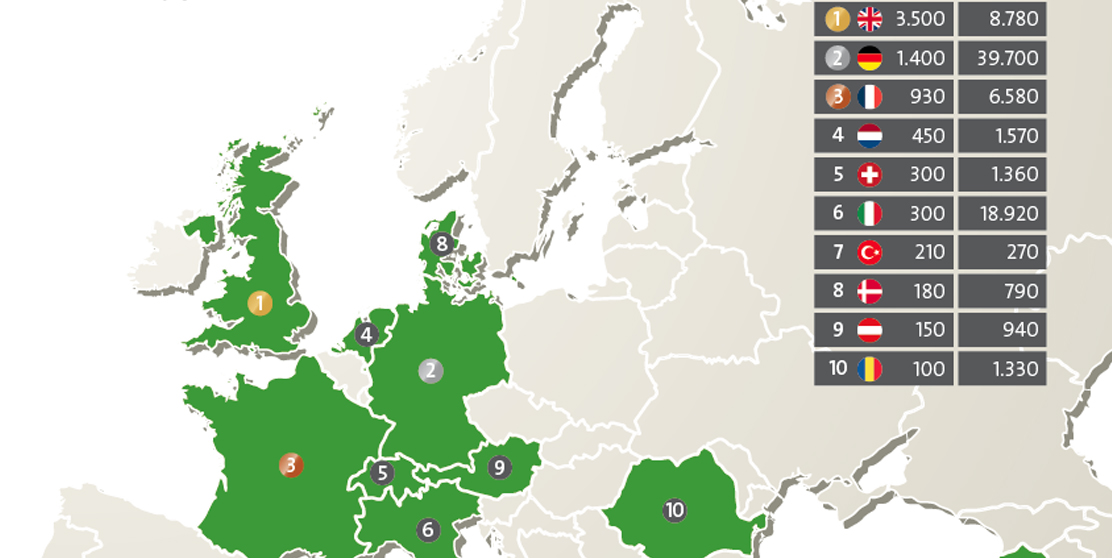Increasing the internal consumption of PV power while charging an electric car
The German Federal Government is aiming to have 1 million electric vehicles on the road in Germany by 2020. This means 6 million vehicles by 2030 [1]. In view of the current situation (2016), this objective is clearly still a long way off. On 1 January 2016, there were only about 25,000 battery-powered electric vehicles, and 130,000 hybrids. To achieve a breakthrough, the technology requires a network of charging points, competitive vehicle models with an adequate range, market models for electric mobility and an economic operating mode for users.
Electric vehicles are now usually charged using the “Plug and Charge” principle. Once the user reaches the charging location, which may be their home, for examplem they plug the vehicle into the mains. The charging process starts with a defined charging capacity and ends when the user unplugs the electric car from the power supply or when the battery is fully charged. Vehicle users normally arrive at the charging location at the end of the working day, often between 4pm and 8pm. The energy generated by a PV plant installed at the charging location is low during this period due to decreasing solar radiation, which means the solar portion of the charging energy is minimal. This means the mains power needs to be used to charge electric vehicles in the evening.
“Plug and Charge” therefore results in an increase in the existing current peak power requirements in the evening hours. Depending on the market penetration, simulations show an increase ranging from 40% to more than 50%. This also places additional demands on power grids. Network expansion in many regions appears inevitable. [2, 3] In addition, the charging operations mainly take place in the evening and at night, when the share of renewable generated electricity on the grid is provided almost exclusively by wind energy. At the same time, high levels of solar radiation during the daylight hours may lead to regulation of PV systems, because there is insufficient consumption to decrease the PV electricity. Managing charging operations is a convenient way of reducing or perhaps even preventing increased night charging peaks and potential expansion of the grid, and for improved matching of renewable energy in the grid with the demand for electricity.

Figure 1: average load increase (as an example) throughout the day from the integration of electric vehicles with unmanaged charging
The University of Mining and Technology (TU Bergakademie Freiberg) is focussing on the last point: boosting the power supply and demand from the use of an electric vehicle. A research project is investigating the management of the charging procedure of an electric car to increase the home consumption of PV electricity, taking into account various forecasts for a home. The research looks at an energy-self-sufficient house, which is equipped among other things with an 8.4 kWp south-facing PV system with a tilt angle of 45° and a lead gel battery with a maximum storage capacity of 58 kWh. The electric vehicle used is a Mitsubishi i-MiEV with a nominal capacity of the lithium ion battery of 16 kWh.
A power forecast estimates the solar yield of the PV system. The forecast of the house load and the charging power needs of the electric vehicle is based on the recorded driving profile. The optimal recharging times (and performance) will be determined based on this (see Figure 1) and taking into account the status of the house batteries using an intelligent control system. Depending on the optimisation scenario, different optimisation goals are available for managing the charging process. Examples include achieving maximum home self-sufficiency, maximum economic efficiency or maximum power consumption of home-generated PV electricity. The latter is the main focus of the investigations. enercast GmbH uses the PV performance forecasts for this research. These are intra-day forecasts with a temporal resolution of 15 minutes and a forecast horizon of 96 hours. They are updated 4 times a day at 6:00, 12:00, 18:00 and 24:00 hours. It is possible to access weather data via the enercast sky portal, which enables global radiation and temperature to be predicted. An independent assessment of the yield of the PV system can in principle be carried out with the parameters of the PV system (e.g., size, tilt, orientation, efficiency) and measurement data, taking into account various factors (e.g., temperature).

Figure 2: Example of a daily forecast of energy production by the PV system, as well as home load to determine the optimum charging periods with a maximum surplus
Initial evaluations show that the forecasts of global radiation and the associated PV performance forecasts on sunny days with low cloud cover correspond very well to the measured values. Because the site of the study is in a mountainous area, there are local weather phenomena (fast and fluctuating cloud formation, fog, etc.) that cause some highly variable clouds, which are apparently difficult to take account of in the forecasts. This results in a somewhat higher number of forecast errors over the summer period. Overall, the forecasts are intended to estimate PV yield for determining with sufficient accuracy the best times for managed charging.
Sources:
[1] „Elektromobilität – Deutschland als Leitmarkt und Leitanbieter“, Bundeministerium für Verkehr, Bau und Stadtentwicklung, Berlin, 2011 (http://www.bmvi.de/SharedDocs/DE/Publikationen/ G/elektromobilitaet-deutschland-als-leitmarkt-und-leitanbieter.pdf?__blob=publicationFile) [2] Nobis, P.; Pellinger, C.; Staudacher, T.: „eFlott (Endbericht) - Wissenschaftliche Analysen zur Elektromobilität (Langfassung)“, FfE Forschungsstelle für Energiewirtschaft e.V., München, 2011 (https://www.ffe.de/download/article/333/eFlott_Abschlussbericht_FfE.pdf) [3] Paetz, A.; Kaschub, T.; Kopp, M.; Jochem, P.; Fichtner, W.: „Monetäre Anreize zur Steuerung der Ladelast von Elektrofahrzeugen – eine modellgestützte Optimierung“, Zeitschrift für Energiewirtschaft, 2013, Heft 1, Seite 1-12


 Back to overview
Back to overview 

